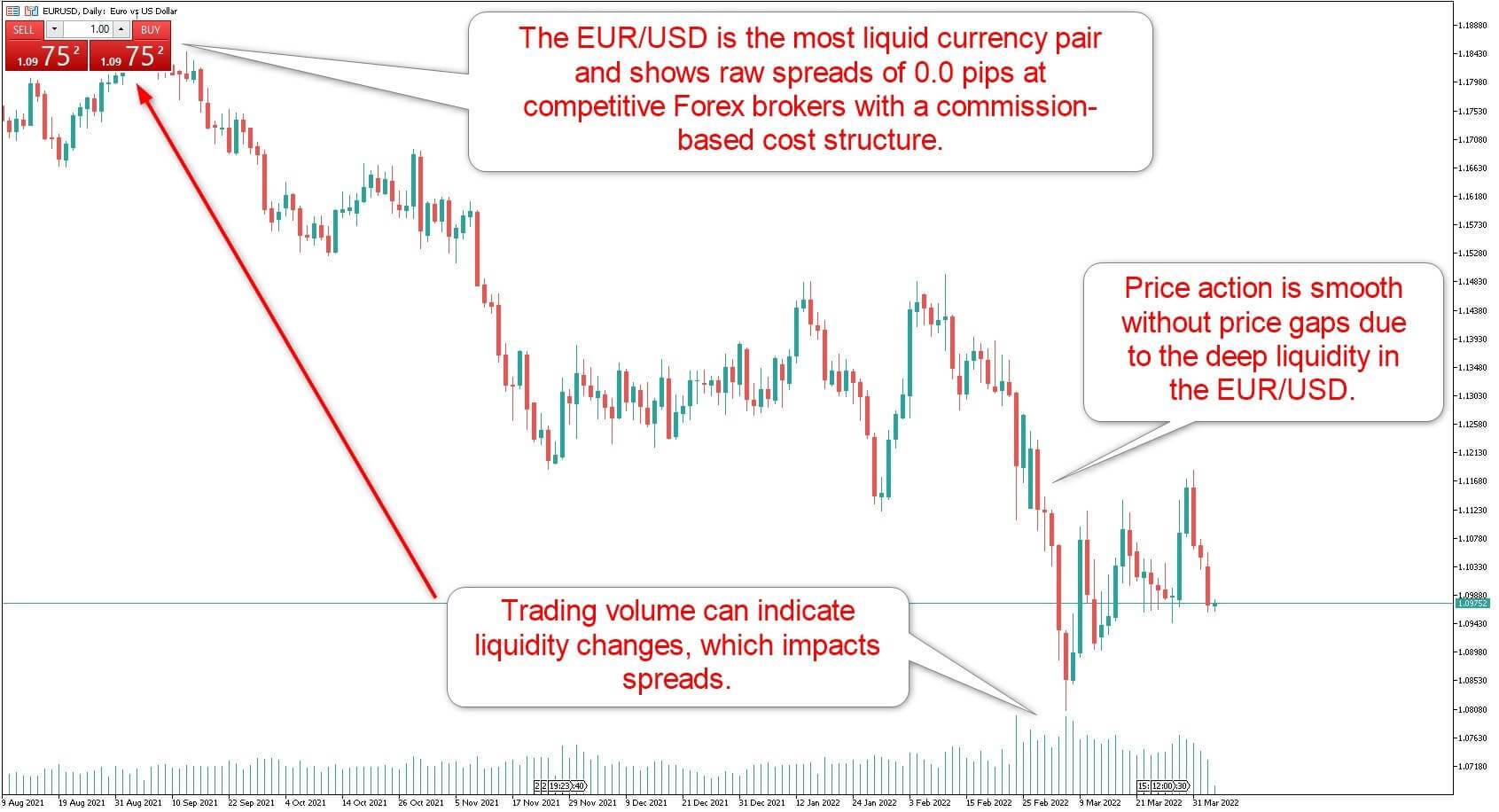
Pullback entry
A pullback refers to a market's return to a trend's beginning point. Depending on the trend, a pullback may be either deep or shallow. You can identify this using indicators such Fibonacci levels or moving averages. The more signals you have, the more reliable your decision will be.
A pullback is part of any uptrend. It can happen due to a sudden drop, profit taking, or negative news regarding the underlying stock. Trader who follows a trend often uses pullbacks to increase or decrease their long positions. These times are when you can use stop buy entry orders and buy limit orders.
Breakout strategy
A breakout strategy is crucial in trading. It allows traders who are not in the range of the price to enter a trade. This strategy aims to profit from the upcoming trend, rather than wait for a long-term trend to emerge. Many traders will have greater success following a breakout strategy than traders who only follow price patterns.

Breakouts usually occur near designated resistance trend lines. However, a failed breakout usually happens when key breakout levels don't hold and price loses momentum. It is important to know the time period that the breakout will last. Trader should also know the profit margin and risk level of each trade. Ideal trader should take the same risk as what they plan to make.
Day trading involves risks
Unlike long-term investors, day traders are often required to make split-second decisions. They must keep track of economic factors, market trends, and news cycles. They must be able to comprehend the intricacies associated with specific products and industries. Investors like these can make huge profits, or they could lose their investment. Day traders might also face margin calls that can result in them losing their money.
Day trading presents one of the greatest risks. It takes a lot of concentration to follow the prices of dozens of stocks, so traders who can't manage their stress may end up making mistakes. Traders should be able to avoid emotions when making investment decisions. You can also use the buy-and-hold strategy. This involves studying different companies and deciding which one to buy.
Strategies used
There are many day trading strategies to choose from, but one of the most popular is the gap and go strategy. This strategy focuses on stocks that show a consistent uptrend and have moderate retracements. Finding a low-risk price entry is crucial for a profitable trade. This can be done by using indicators like trendlines or moving averages. The trade's risk/reward ratio should not exceed 1:1.

Day trading strategies are a great way to reduce risk and maximize your profit. Once you have decided on a strategy, you can now choose the instruments that you want to trade in. You can choose stocks, ETFs as well as futures, commodities and other options.
FAQ
What is a Stock Exchange and How Does It Work?
Companies can sell shares on a stock exchange. Investors can buy shares of the company through this stock exchange. The price of the share is set by the market. It is typically determined by the willingness of people to pay for the shares.
Investors can also make money by investing in the stock exchange. Investors give money to help companies grow. They do this by buying shares in the company. Companies use their money as capital to expand and fund their businesses.
There are many kinds of shares that can be traded on a stock exchange. Some are known simply as ordinary shares. These are most common types of shares. Ordinary shares are bought and sold in the open market. Prices of shares are determined based on supply and demande.
Preferred shares and debt security are two other types of shares. When dividends become due, preferred shares will be given preference over other shares. These bonds are issued by the company and must be repaid.
Why is a stock called security.
Security is an investment instrument whose value depends on another company. It could be issued by a corporation, government, or other entity (e.g. prefer stocks). The issuer promises to pay dividends and repay debt obligations to creditors. Investors may also be entitled to capital return if the value of the underlying asset falls.
What is a REIT?
An REIT (real estate investment trust) is an entity that has income-producing properties, such as apartments, shopping centers, office building, hotels, and industrial parks. They are publicly traded companies which pay dividends to shareholders rather than corporate taxes.
They are similar to corporations, except that they don't own goods or property.
What is security in the stock market?
Security can be described as an asset that generates income. Most common security type is shares in companies.
There are many types of securities that a company can issue, such as common stocks, preferred stocks and bonds.
The value of a share depends on the earnings per share (EPS) and dividends the company pays.
When you buy a share, you own part of the business and have a claim on future profits. You will receive money from the business if it pays dividends.
Your shares can be sold at any time.
How are securities traded?
The stock market is an exchange where investors buy shares of companies for money. In order to raise capital, companies will issue shares. Investors then purchase them. Investors then resell these shares to the company when they want to gain from the company's assets.
Supply and demand determine the price stocks trade on open markets. The price rises if there is less demand than buyers. If there are more buyers than seller, the prices fall.
There are two methods to trade stocks.
-
Directly from company
-
Through a broker
Are bonds tradeable
Yes they are. Bonds are traded on exchanges just as shares are. They have been traded on exchanges for many years.
They are different in that you can't buy bonds directly from the issuer. You must go through a broker who buys them on your behalf.
This makes buying bonds easier because there are fewer intermediaries involved. You will need to find someone to purchase your bond if you wish to sell it.
There are several types of bonds. There are many types of bonds. Some pay regular interest while others don't.
Some pay quarterly, while others pay interest each year. These differences make it easy for bonds to be compared.
Bonds are great for investing. You would get 0.75% interest annually if you invested PS10,000 in savings. If you invested this same amount in a 10-year government bond, you would receive 12.5% interest per year.
If you put all these investments into one portfolio, then your total return over ten-years would be higher using bond investment.
What is the difference between non-marketable and marketable securities?
The key differences between the two are that non-marketable security have lower liquidity, lower trading volumes and higher transaction fees. Marketable securities, on the other hand, are traded on exchanges and therefore have greater liquidity and trading volume. Marketable securities also have better price discovery because they can trade at any time. This rule is not perfect. There are however many exceptions. Some mutual funds are not open to public trading and are therefore only available to institutional investors.
Marketable securities are more risky than non-marketable securities. They are generally lower yielding and require higher initial capital deposits. Marketable securities are usually safer and more manageable than non-marketable securities.
A large corporation bond has a greater chance of being paid back than a smaller bond. The reason for this is that the former might have a strong balance, while those issued by smaller businesses may not.
Because of the potential for higher portfolio returns, investors prefer to own marketable securities.
Statistics
- "If all of your money's in one stock, you could potentially lose 50% of it overnight," Moore says. (nerdwallet.com)
- Ratchet down that 10% if you don't yet have a healthy emergency fund and 10% to 15% of your income funneled into a retirement savings account. (nerdwallet.com)
- Our focus on Main Street investors reflects the fact that American households own $38 trillion worth of equities, more than 59 percent of the U.S. equity market either directly or indirectly through mutual funds, retirement accounts, and other investments. (sec.gov)
- The S&P 500 has grown about 10.5% per year since its establishment in the 1920s. (investopedia.com)
External Links
How To
How to create a trading plan
A trading plan helps you manage your money effectively. It helps you identify your financial goals and how much you have.
Before you start a trading strategy, think about what you are trying to accomplish. You might want to save money, earn income, or spend less. You might want to invest your money in shares and bonds if it's saving you money. You can save interest by buying a house or opening a savings account. If you are looking to spend less, you might be tempted to take a vacation or purchase something for yourself.
Once you have a clear idea of what you want with your money, it's time to determine how much you need to start. This depends on where you live and whether you have any debts or loans. Consider how much income you have each month or week. Your income is the net amount of money you make after paying taxes.
Next, you'll need to save enough money to cover your expenses. These expenses include bills, rent and food as well as travel costs. These expenses add up to your monthly total.
You will need to calculate how much money you have left at the end each month. This is your net available income.
Now you know how to best use your money.
Download one from the internet and you can get started with a simple trading plan. Ask an investor to teach you how to create one.
For example, here's a simple spreadsheet you can open in Microsoft Excel.
This is a summary of all your income so far. It also includes your current bank balance as well as your investment portfolio.
Here's another example. This was designed by a financial professional.
It will let you know how to calculate how much risk to take.
Don't attempt to predict the past. Instead, you should be focusing on how to use your money today.